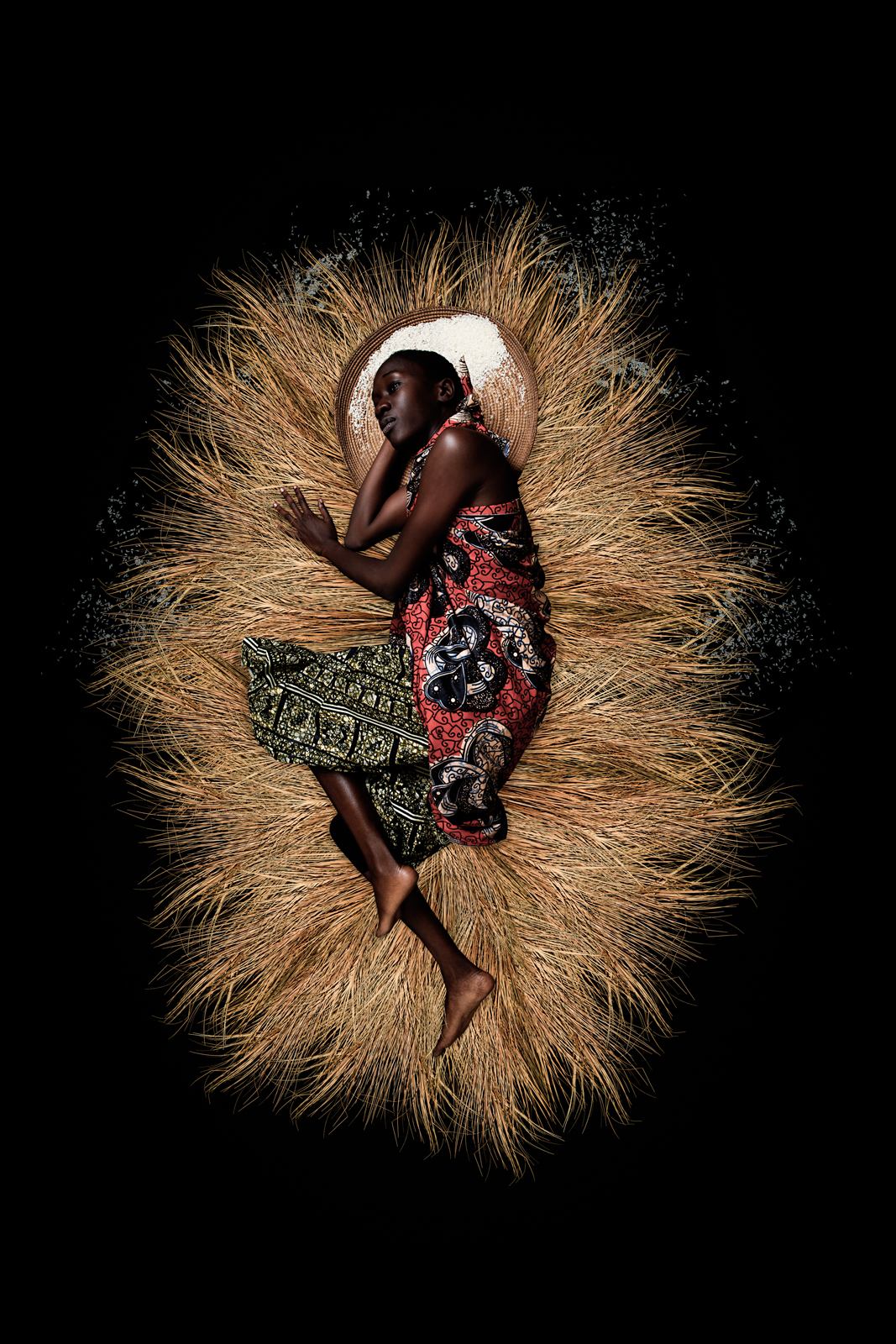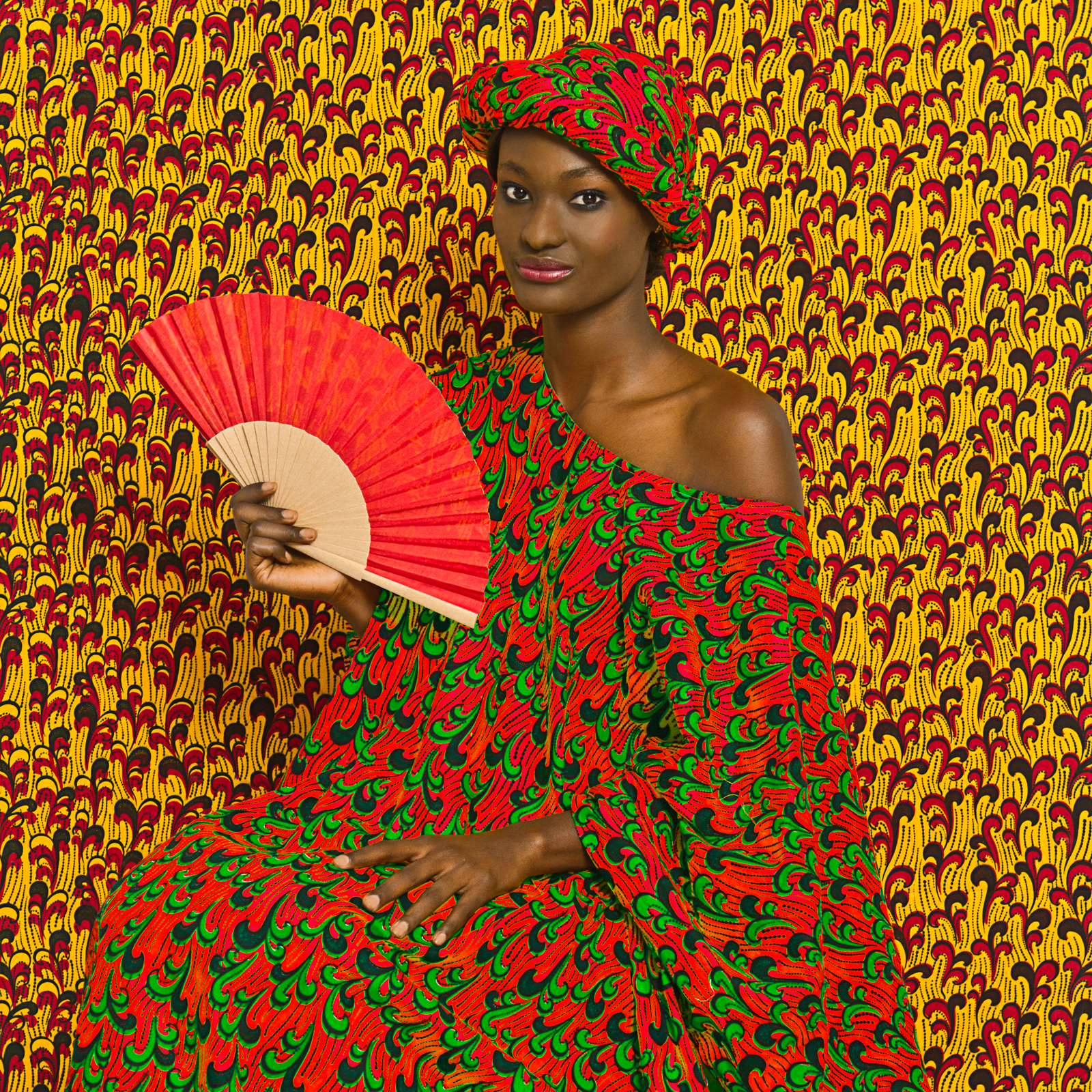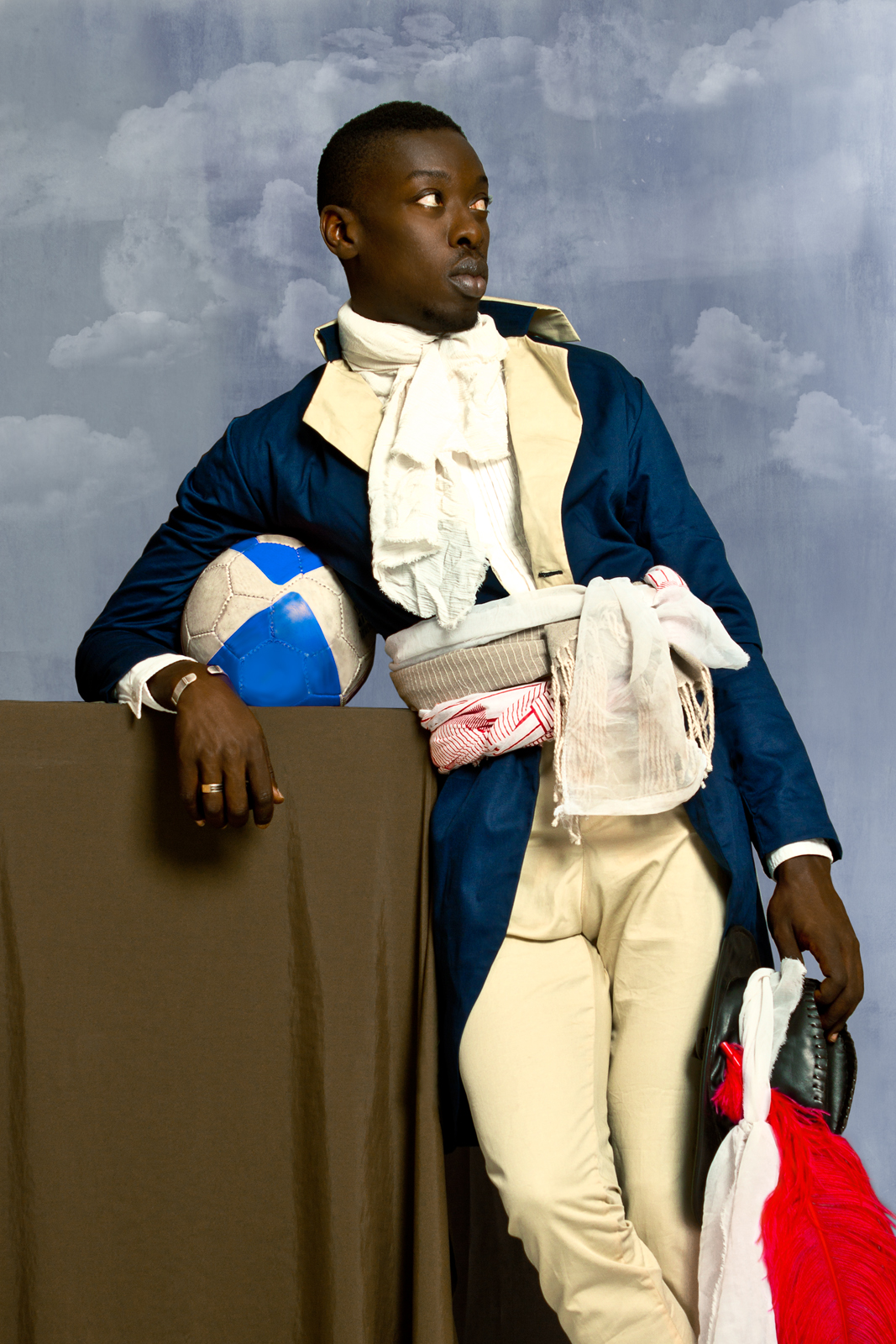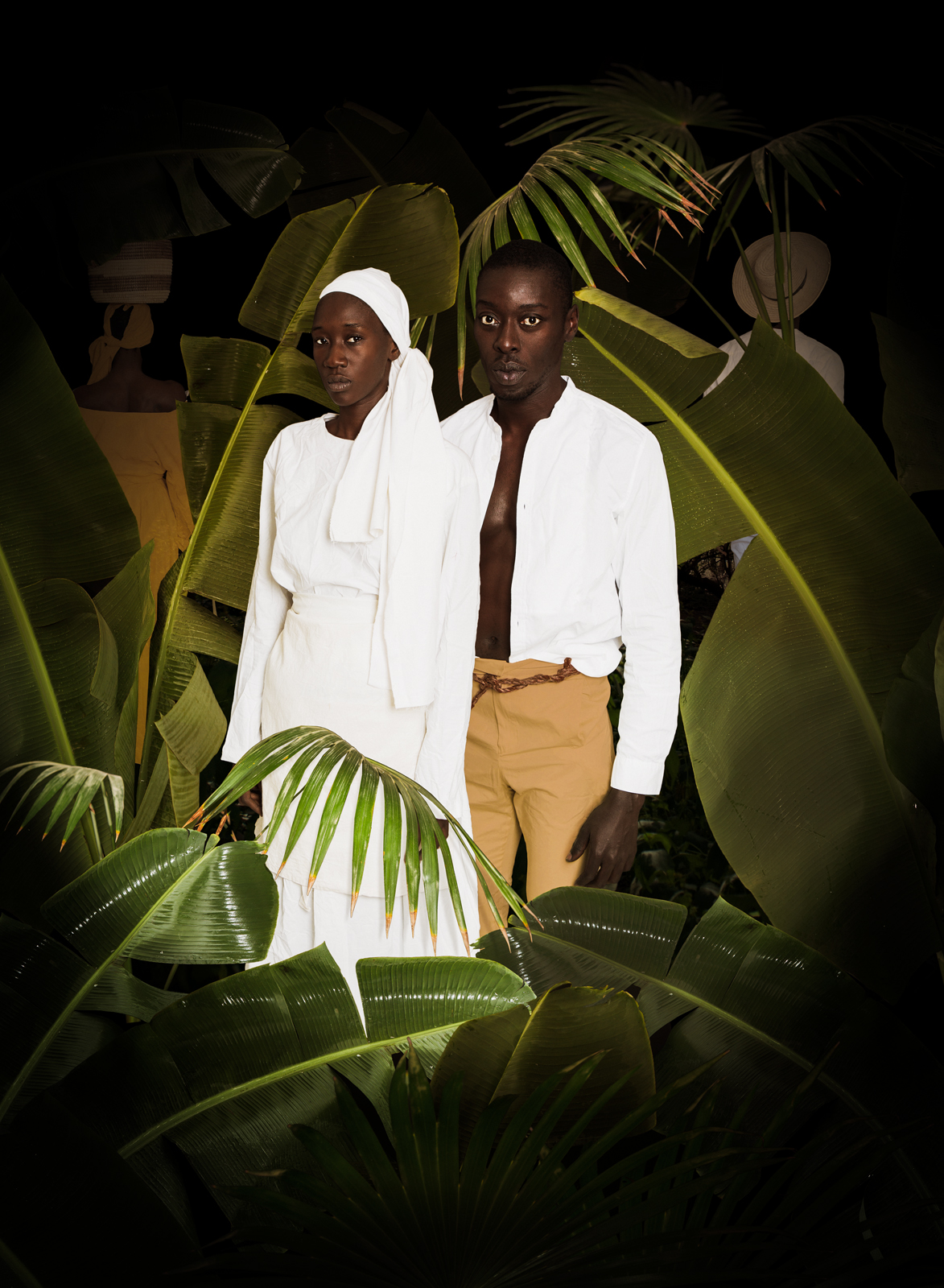OMAR VICTOR DIOP - CULTURE SHOTS
CULTURE SHOTS
Omar Victor Diop may be a photographer, a filmmaker, a fashion designer and an art director, but what defines him most is his passion for authenticating identity. With identity comes diversity, and Diop’s arresting visuals show that acknowledging and embracing diversity will ultimately bring us all together.
Your work could be described as portraiture. What is the key to capturing someone’s essence in a photograph?
Indeed, a lot of my artistic practice involves portraiture, and to me, the key to a “successful” portrait is the interaction between the photographer and the sitter. It is less about the visual aspect of the portrait than the story that the image can tell, or the feelings it can communicate.
I view each of my portraits as a collaboration with the sitter; I do not dictate a scenography and style to the person I photograph. In fact, there’s a long conversation, a lot of back and forth between the sitter and myself, which involves visits to their homes, sometimes some shopping or even fashion design, lunches and dinners, because I want both of us to own the result of this lengthy exercise.
In your ‘Liberty’ series you feature yourself in all the photographs depicting key moments in black history. How come?
Liberty is an attempt to put together a visual chronology of black protests in Africa and across the African diaspora, in the form of self-portraits. The intent is to build a common narrative between events which took place in different times and countries, but which share a motivation: to restore and/or defend the liberty of black people. While Martin Luther King was marching in Selma, Alabama in the early sixties, the African youth was still struggling to either obtain or defend the independence and dignity or their young countries on the continent, following the end of colonial rule.
There are comparisons that can be drawn between the uprisings which triggered the abolitionist movements in the West Indies and current movements such as Black Lives Matter: It is a struggle for dignity, for equality and justice. At the end of the day, this series could be labeled as a reference to black history, but it’s a lot more than that, it’s about the resilience of the human spirit, the need to be acknowledged and respected, our need for justice; this goes beyond race.
If you could shoot anyone’s portrait, dead or alive, who would it be?
That’s a hard one… Nat King Cole, the epitome of Coolness… or maybe Barack Obama -That’d be slightly “easier”, just six degrees, right? – Malala Yousafzai (2014 Nobel Peace Prize).
You describe your work as interrogative. If you could ask the world one question, what would it be?
“What will it take for each one of us to share a common future?” I know it sounds naïve to many, but I believe that as long as we dismiss each other’s history and legacy, we will find it hard to envision a future together.
“I think empathy and hope are what fuel my imagination: Art is about sharing feelings and aspirations, but also about acknowledging fears and concerns… It truly is the most beautiful thing.”
The mainstream media’s narrative concerning Africa is usually focused on poverty and/or corruption, but rarely on Western oppression. What did you decide to shed light on the matter through your art?
Well, what I try to do is to balance the perceptions that people have of us Africans. It is true that my last series Liberty is about the history of black protests, but a quick look at all the work I’ve been producing in the last few years shows a lot of diversity in the topics I choose. The African experience is rich.
Our past was not only tragic, it is filled with inspiring individuals and societies, and so is our present. Africa is not only the land of the poor, it is the land of diversity, where great successes are taking place as we speak.
The continent has brought so much to the world that one wouldn’t know where to start counting them. Hence, I balance my historic references with very contemporary works such as portraits of my generation of Africans, fashion photography etc.
Western countries successfully portray themselves in the media as ambassadors of democracy and yet have been oppressing entire continents for centuries. Why are we so image driven?
I don’t know why we’re so image driven, but one thing I know: Image makers like myself can (and should) use the world’s addiction to visual content to change perceptions. More and more African artists and public figures use their voices to show their African reality, and this will balance the deficit of positive representations.
Some say the best art stems from oppression. Do you agree?
I really cannot tell you. I’ve never experienced oppression, and I haven’t met anyone who has. I was born and raised in a beautiful country (Senegal) where people genuinely look beyond religious or racial differences and value harmony and tolerance more than anything else. I remember my childhood with a bright smile: a Muslim kid in a Catholic school, with classmates from all parts of the world. I’m from a generation made from love, and still, I’ve always felt the need to create things, share stuff. I think empathy and hope are what fuel my imagination: Art is about sharing feelings and aspirations, but also about acknowledging fears and concerns… It truly is the most beautiful thing.
In your opinion is social media a weapon against oppression or a tool for oppression?
We blame social media for the flaws that our societies have. Social media didn’t create trolls, they just opened an avenue for them. I think that people who are kind in real life remain kind online. Social media amplifies social dynamics. It can destroy as much as it can empower.
How has social media affected your work?
Greatly! I think that thanks to social media, my audience worldwide has grown in an exponential fashion. This has made many things easy, such as reaching out to historians, public figures and potential collaborators. I think putting my work out there would’ve been a hell of a lot harder if I had to pen handwritten letters and tribunes in magazines.
What is the biggest misconception about African culture?
The biggest misconception is that one billion human beings living in a continent three times bigger than Europe, comprising 54 countries, surrounded by two oceans and several seas, and who have been in contact with people from the four corners of the earth for centuries would have just one culture. Africa is the land of diversity. The concept of Africa in itself is the most inspiring vision, and as a people, we’re still building it, bringing our influences together while creating tools which will secure a brighter future. I believe in this dream, and my contribution to it is my art.
Patterns are a big part of African culture and of your work. Patterns are also a big part of our lives. If you could break one pattern in your life, which one would it be?
That’s a hard one. the patterns I’ve identified so far aren’t necessarily negative: even repeated mistakes happen for a reason.
What’s next for Omar Victor Diop?
2018 looks positively scary: so much in the making! Fashion design, film, more photography, opening an art center in Dakar, my hometown. I’m going to take it step-by-step!
INTERVIEWED BY RALPH ARIDA






